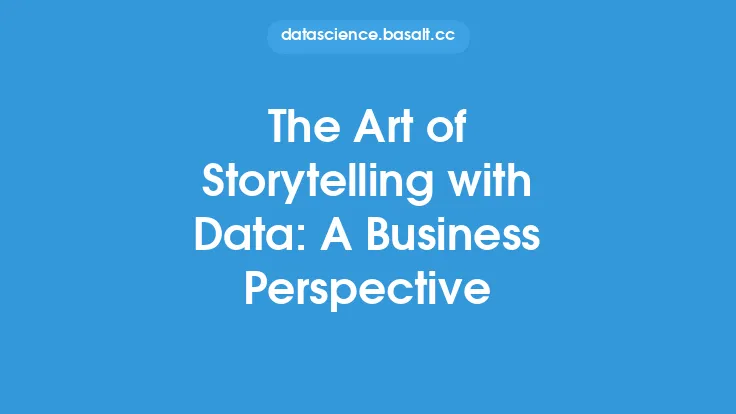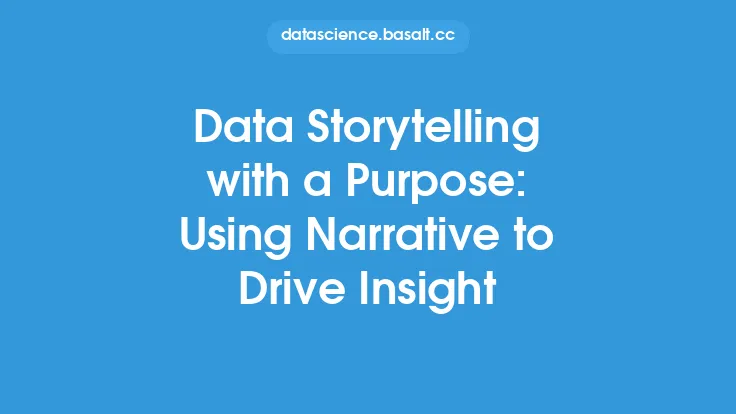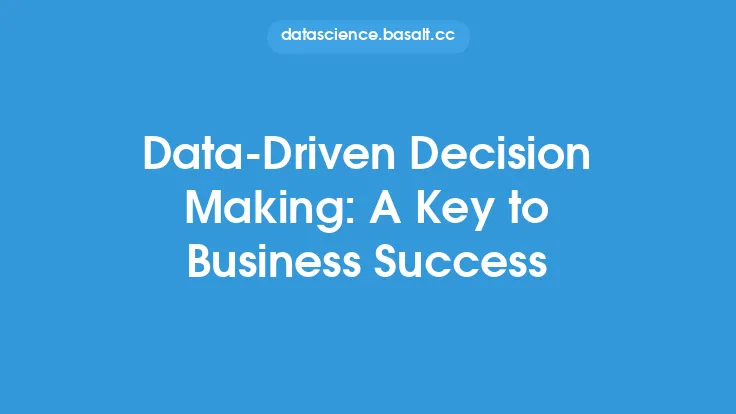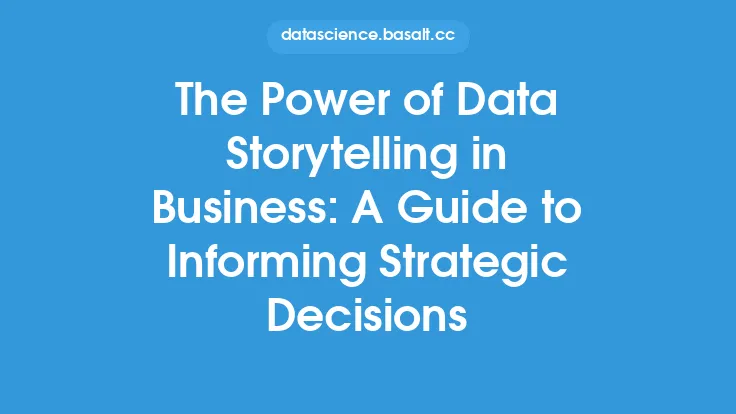In today's fast-paced business landscape, organizations are constantly seeking ways to gain a competitive edge and make informed decisions. One crucial aspect of achieving this goal is the effective use of data. With the exponential growth of data, it has become increasingly important for businesses to not only collect and analyze data but also to present it in a way that is easy to understand and actionable. This is where storytelling with data comes into play, serving as a key to unlocking business intelligence.
Introduction to Storytelling with Data
Storytelling with data is the process of using narrative techniques to communicate insights and findings from data analysis. It involves transforming complex data into a compelling story that can be easily understood by both technical and non-technical stakeholders. This approach helps to bridge the gap between data analysis and business decision-making, enabling organizations to extract maximum value from their data. Effective storytelling with data requires a combination of technical skills, such as data analysis and visualization, and soft skills, such as communication and narrative techniques.
The Importance of Storytelling in Business Intelligence
Storytelling plays a vital role in business intelligence, as it enables organizations to extract insights from data and present them in a way that drives action. By using storytelling techniques, businesses can create a narrative around their data, making it more engaging and memorable. This approach helps to facilitate better decision-making, as stakeholders are more likely to understand and act upon insights that are presented in a clear and compelling manner. Furthermore, storytelling with data helps to build trust and credibility, as it provides a transparent and unbiased view of the data, allowing stakeholders to make informed decisions.
Key Elements of Storytelling with Data
There are several key elements that are essential for effective storytelling with data. First and foremost, it is crucial to have a clear understanding of the audience and the message that needs to be conveyed. This involves identifying the key stakeholders, their level of technical expertise, and the insights that need to be communicated. Next, it is essential to select the right data visualization tools and techniques, such as charts, graphs, and tables, to effectively communicate the insights. Additionally, the narrative should be structured in a logical and coherent manner, with a clear beginning, middle, and end. Finally, the story should be supported by evidence and data, to build credibility and trust.
Data Visualization Techniques for Storytelling
Data visualization plays a critical role in storytelling with data, as it enables organizations to communicate complex insights in a clear and concise manner. There are several data visualization techniques that can be used for storytelling, including charts, graphs, tables, and maps. Each of these techniques has its own strengths and weaknesses, and the choice of technique depends on the type of data, the insights that need to be communicated, and the audience. For example, bar charts and line graphs are effective for showing trends and patterns, while scatter plots and heat maps are better suited for showing correlations and relationships. Additionally, interactive visualization tools, such as dashboards and reports, can be used to create dynamic and engaging stories that allow stakeholders to explore the data in more detail.
Best Practices for Storytelling with Data
To ensure that storytelling with data is effective, there are several best practices that organizations should follow. First and foremost, it is essential to keep the story simple and focused, avoiding unnecessary complexity and jargon. Next, the story should be supported by evidence and data, to build credibility and trust. Additionally, the narrative should be structured in a logical and coherent manner, with a clear beginning, middle, and end. Furthermore, organizations should use interactive and dynamic visualization tools, such as dashboards and reports, to create engaging and immersive stories. Finally, it is crucial to test and refine the story, to ensure that it resonates with the audience and communicates the intended insights.
Technical Skills for Storytelling with Data
To become proficient in storytelling with data, organizations need to possess a range of technical skills. First and foremost, they need to have expertise in data analysis and statistics, to extract insights from complex data sets. Next, they need to have proficiency in data visualization tools and techniques, such as Tableau, Power BI, or D3.js, to communicate insights in a clear and concise manner. Additionally, organizations need to have skills in programming languages, such as Python or R, to manipulate and analyze large data sets. Furthermore, they need to have knowledge of data management and governance, to ensure that data is accurate, complete, and secure. Finally, organizations need to have expertise in cloud computing and big data technologies, such as Hadoop or Spark, to handle large-scale data processing and analysis.
Common Challenges in Storytelling with Data
Despite the importance of storytelling with data, there are several common challenges that organizations face. One of the biggest challenges is the lack of technical skills, particularly in data analysis and visualization. Additionally, organizations often struggle to identify the right insights and message, leading to confusing and ineffective stories. Furthermore, the sheer volume and complexity of data can make it difficult to create a clear and concise narrative. Moreover, organizations often face challenges in communicating insights to non-technical stakeholders, who may not have the necessary background or expertise to understand the data. Finally, the rapid pace of technological change can make it difficult for organizations to keep up with the latest tools and techniques, leading to outdated and ineffective storytelling approaches.
Future of Storytelling with Data
The future of storytelling with data is exciting and rapidly evolving. With the increasing use of artificial intelligence and machine learning, organizations will be able to automate many aspects of data analysis and visualization, freeing up more time for storytelling and insight generation. Additionally, the rise of cloud computing and big data technologies will enable organizations to handle larger and more complex data sets, leading to more nuanced and detailed insights. Furthermore, the development of new data visualization tools and techniques, such as virtual and augmented reality, will enable organizations to create more immersive and engaging stories. Finally, the increasing importance of data-driven decision-making will drive demand for skilled storytellers who can communicate insights and findings in a clear and compelling manner.





